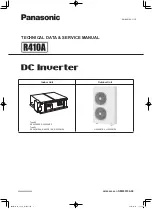Chilicon Power Residential Design and Installation Guide
9
microinverters have built-in surge protection, this may not always protect the devices from the energy spike
caused by lightning. Additional surge protection devices are strongly recommended. Please refer to Chilicon
Power’s “
Technical Bulletin: Surge Protection for Microinverter Systems”
located in the appendix for more details.
Installation Procedure
4.1 Installation
Please read entire procedure prior to installing.
Step 1: Measure the AC voltage at the main service panel
Step 2: Position the microinverters on the rails and loosely secure
Step 3: Complete the installation map
Step 4: Layout the trunk cable and connect the sections
Step 5: Reposition the microinverters and secure to the racking
Step 6: Connect the microinverters to the PV modules and trunk cable
Step 7: Install the AC branch circuit junction boxes.
Step 8: Connect the system to the main service panel
Step 9: Install the communication gateway and commission the system
Step 10: Finish entering additional site information on-line
Note: Chilicon Power recommends taking photos of the PV system during installation, including the panel label,
microinverter attachment to the racking, the junction box connection, and the system grounding.
DO NOT connect the Chilicon Power microinverters to the utility grid until you have checked that all
of the module and cable connections are correct and secure. Confirmation can be determined by
the correct microinverter blink codes.
Step 1: Measure Grid AC Voltage at the Main Service Panel
Using the multimeter, measure the AC line voltage at the main service panel to ensure it is within range for the
proper operation of each microinverter. The nominal voltage should be 240V AC. If the voltage is appreciably
above this, the system may experience microinverter shutdown at the end of the branch circuits due to node


















